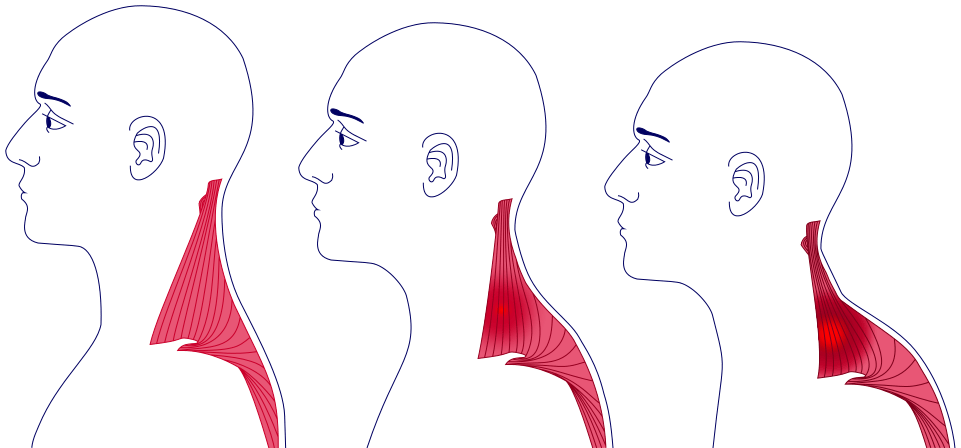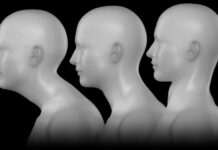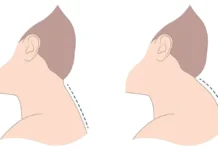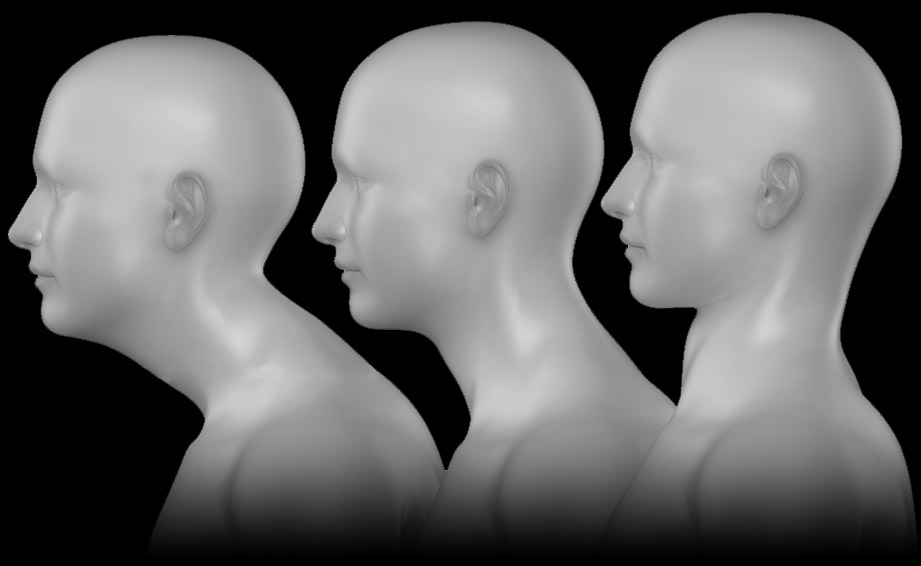Posture is defined as “the attitude of the body”. It is the mirror of our inner self. If life weighs us down, we tend to let our shoulders drop and round them forward. This posture brings the head forward.
How to detect forward head
Assessment of the anterior position of the head is probably the most useful postural parameter in a patient with head and neck pain. Looking at the patient from the side, place a real or imaginary plumb line on a tangent to the crest of the kyphotic curve of the thoracic spine. With a ruler, measure the distance between this line and the depth of the cervical curve. This measurement should be approximately 6 cm.

- A measurement of less than 6 cm indicates a loss of cervical lordosis, frequently seen after trauma.
- Measurements greater than 6 cm indicate anterior head positioning.
- Anterior head positioning occurs with rounded shoulders.
- The result is that the suboccipital, posterior cervical, upper trapezius and splenius capitis muscles contract and shorten to bring the head into extension to allow the eyes to look forward.
- The sternocleidomastoid muscle
- has a mechanical disadvantage and becomes overloaded, as does the splenius cervicis
- The forward positioning of the head also puts additional pressure on the occipito-atlantic junction as the occiput is in an extenuated position relative to C1.
- The suprahyoid and infrahyoid muscles are placed in a stretched position creating increased downward elastic tension on the mandible, hyoid bone and tongue.
- As a result, the mandibular lift muscles reflexively contract to counteract the mouth-opening forces of the suprahyoid and infrahyoid muscles.
- Restoring normal posture, particularly normal head positioning, is the crucial first step in the management of almost all chronic head and neck pain.
- This is because myofascial triggers are almost always a contributing, if not causal, factor, and prior head positioning perpetuates them.
Almost everything we do is down and in front of us. From the day a child is given crayons and a colouring book, to the years spent sitting at a desk reading and writing in primary school, college and university, we tend to hold our heads forward to read, write and study. In addition, activities such as office work, manual work such as sewing or embroidery done on the knees, caring for children held in parents’ arms, preparing and cutting food while cooking, holding a mobile phone and working on a computer with a low screen tend to put the head in an anterior position. It is no wonder that so many people have an anterior head position and that their posterior neck muscles are so often tense. Using a book stand or a tilted desk, like those used by architects and engineers, is an easy way to avoid this problem!
Exercises to achieve good posture
- All posture exercises should be repeated frequently throughout the day.
- A good rule of thumb is to repeat the exercises at least every 1-2 hours, which translates into a minimum of 6 times a day.
- The following full body posture exercise includes a shoulder posture component and a head posture component which together are designed to restore normal shoulder and thoracic kyphosis and normal head position.
- All exercises require properly coordinated breathing to be optimally effective.
Shoulder Posture
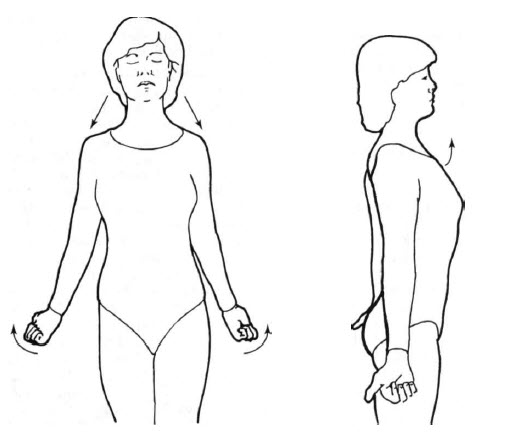
- This exercise will bring the shoulders back into a rounded position while stretching the pectoral muscles and strengthening the upper back muscles.
- Stand with your feet about 4 inches apart, arms at your sides, thumbs pointing forward.
- Squeeze the buttocks to stabilise the lower back.
- Turn her arms and shoulders out and back (thumbs pointing back) while inhaling, squeezing the shoulder blades together in the back. Hold this position while pulling the shoulders down and exhaling.
- Hold this position while breathing normally and correcting the head posture
Head posture
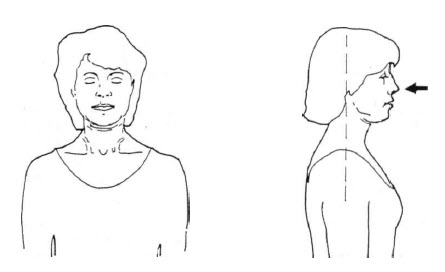
- This exercise is designed to correct the anterior position of the head and should be performed in conjunction with the previous shoulder posture exercise.
- Gently move the head back to align the ears with the shoulders (also called axial extension).
- This should be done without moving the nose up or down and without opening the mouth.
- Patients should hold the correct position for at least 6 seconds while breathing normally.
- When finished, they should relax, but remain in good posture.
- They should not collapse into a habitual bad posture. If the improved postural position feels uncomfortable or military, ask the patient to shift their body weight from the heels to the balls of the feet.

